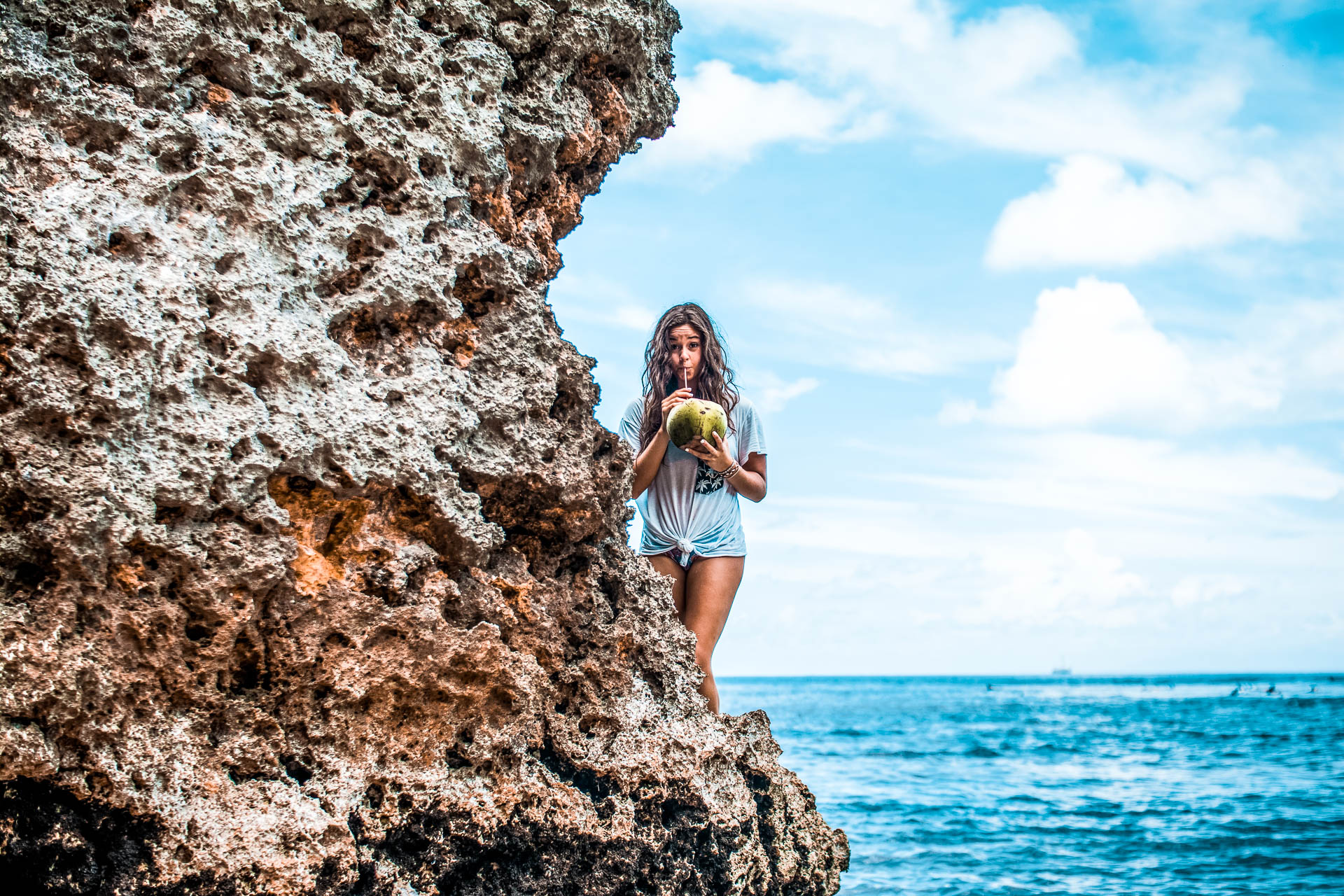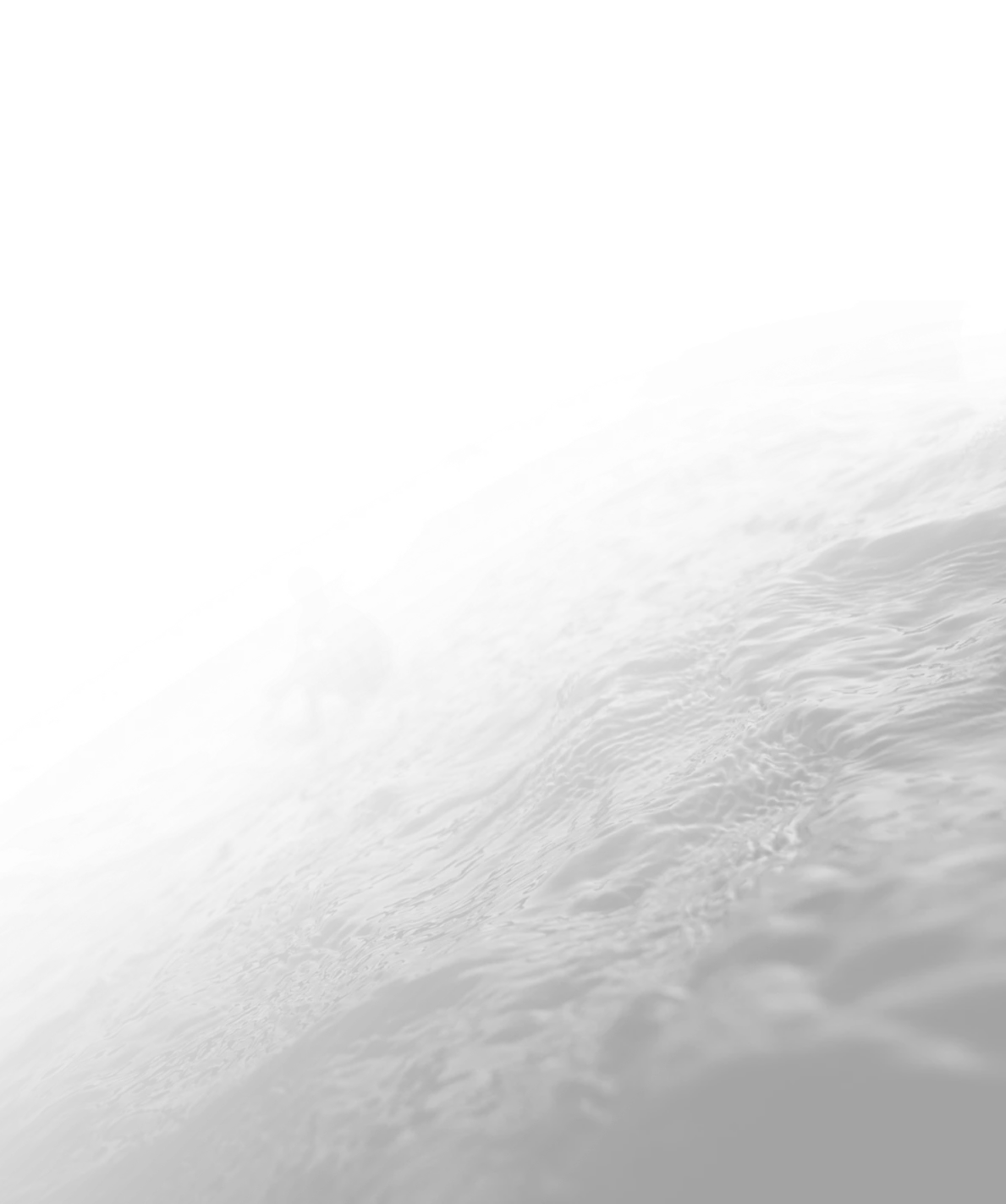Just a short distance from the bustling tourist hubs of the Indonesian island of Bali, lies a realm of tradition, rustic beauty, and a serene, laid-back lifestyle.
If you lean towards nature, picturesque villages, and immersing yourself in the genuine Balinese way of life, you might find your ideal getaway away from Bali’s well-trodden tourist paths in Ubud and Uluwatu. Here, you can delve into the thriving and captivating culture that this tropical paradise has to offer.
Where to Find Genuine Bali?
Bali’s interior and coastal villages are where the real Bali exists: relaxed farming, rice terraces and fishing communities, where local life is not driven by tourism, but other industries like harvesting and drying seaweed for use in cosmetic products or growing coffee.
There is also currently a ‘bamboo boom’ taking place in Bali. Seen as a green and sustainable building material, bamboo structures, such as a 3-story chocolate factory or ‘bamboo cathedral’ are the result of an innovative and environmentally minded trend in Balinese architecture.
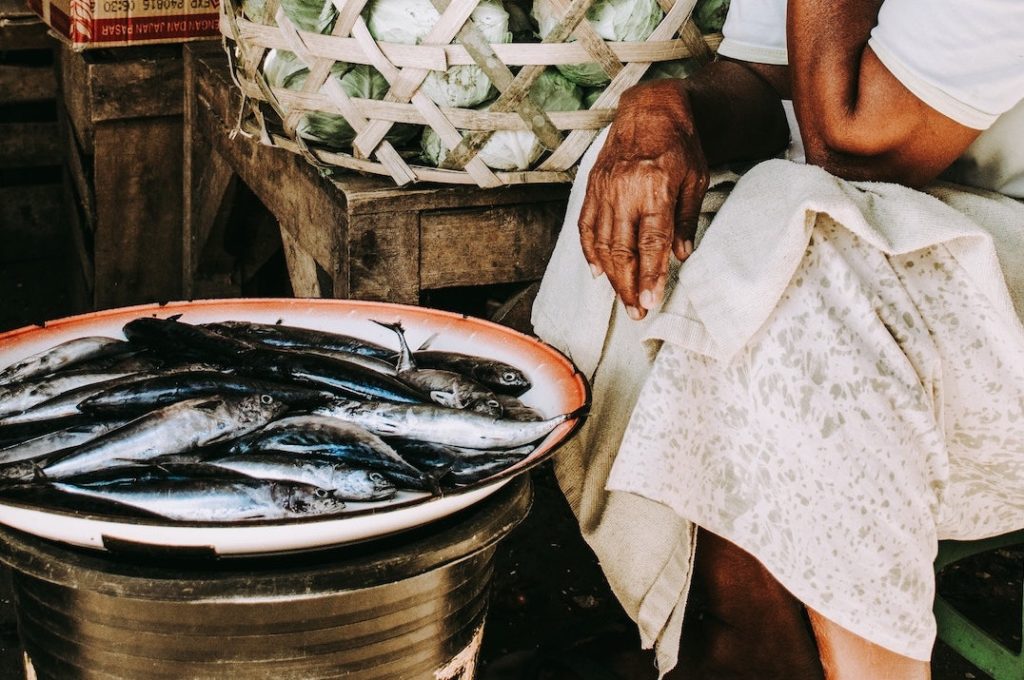
From a report by the Associated Press:
Bali is leading the charge, attracting carpenters, architects and designers from across the globe to use bamboo in building everything from a school and luxury villas to exclusive resorts.
Of course, Bali’s nature is what draws most people away from the beach resorts and nightclubs of Kuta. Scuba diving in coastal waters, trekking through lush jungles, bathing in waterfalls and of course surfing Bali’s world-famous waves. And it is in the Balinese countryside where travellers can witness the unique and rich fields this tropical island has to offer.
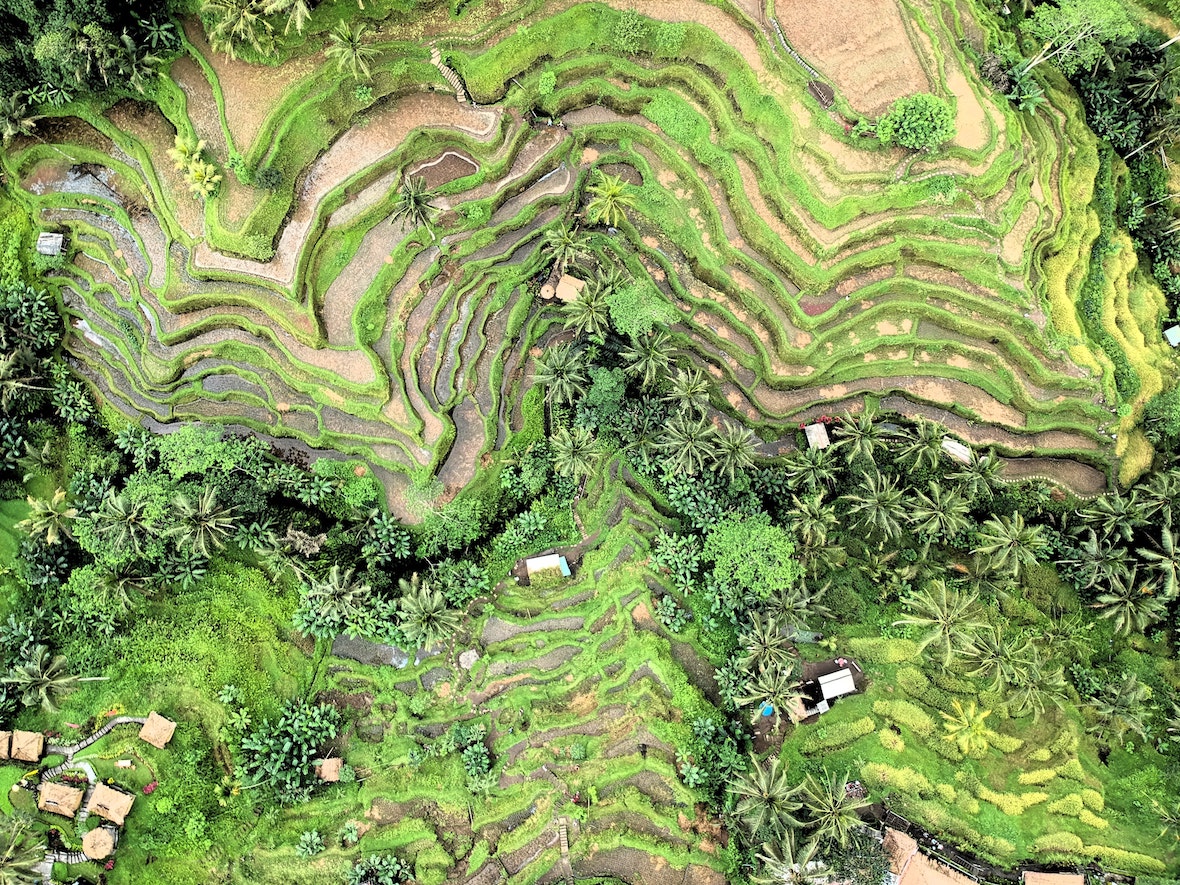
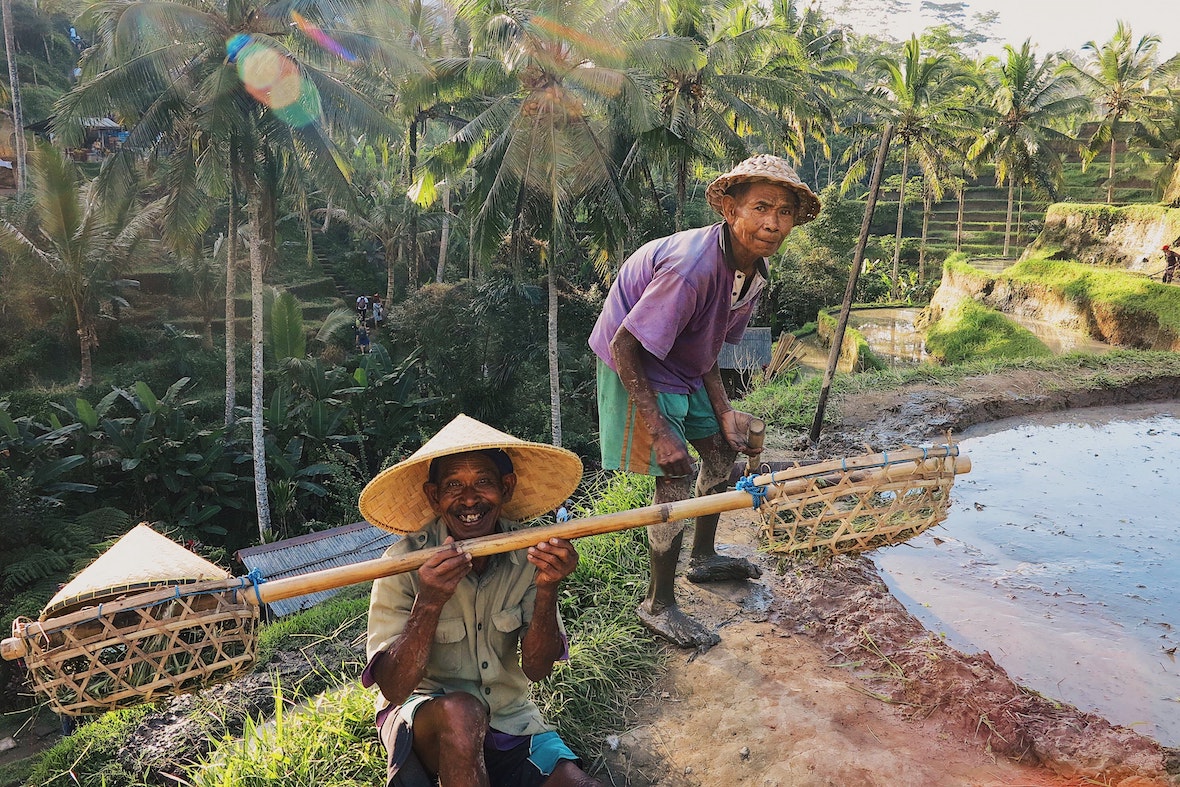
The ‘genuine Bali’ – is seen in the off the beaten tourist track, away from the pulsating nightlife and shopping, is a fascinating paradise of traditional culture and natural wonder. The ‘real Bali’, if you like. If you are digital nomad looking for your next stop where you can be one with nature, this is the place to be as not all areas of Bali are crowded and there are hidden gems where you can enjoy wholesome Balinese goodness.
An article in the Sydney Morning Herald delves deeper into where and how to see the real Bali (nature’s gift) and comes up with the beaches around Rapture Surfcamps, located right on the Bukit peninsula.
The author found it to be heaven, for both surfers and non-surfers alike:
My cousin, who was surfing on the Bukit Peninsula, south of the airport, urged me to get down there. I told him I didn’t surf. He said it didn’t matter. He was right. A handful of gorgeous, quiet, sandy beaches studded the western coastline. Padang Padang and Bingin were secluded little charmers, where surfers paddled out to catch board-crunching breaks, non-surfers dozed under colourful umbrellas and down-to-earth Balinese cooked up satay, nasi goreng and mi goreng by the shore.
Sounds pretty good, huh? And the author isn’t even a surfer.
Ubud: Bali’s cultural capital
Ubud is Bali’s cultural heart, known for its lush landscapes, vibrant arts scene, and serene ambiance. Here, you can explore traditional Balinese temples, visit the famous Monkey Forest, and enjoy yoga and wellness retreats. Ubud is also a great base for exploring the nearby rice terraces and water temples.
A Reuters article entitled ‘48 hours in Bali’ cuts to the chase by spending most of the time in Ubud:
Take in a traditional dance performance. There are about six different offerings each night, both in Ubud and in surrounding villages. Notable performances include dance troupe Semara Ratih, known for expressiveness, and Suara Sakti, a bamboo gamelan group that invites viewers up on stage at the end to feel the thunder of the giant instruments in their bodies.
Reuters
Here are some highlights of what you can experience in Ubud:
- Ubud Monkey Forest: Home to hundreds of playful long-tailed macaques, the Monkey Forest is not only a natural wonder but also a spiritual and cultural site.
- Traditional Balinese Arts: Ubud is renowned for its traditional arts, including dance, music, and painting. Attend a traditional dance performance or visit local art galleries to witness the vibrant creativity of Balinese artists.
- Sacred Temples: Explore ancient temples like the Goa Gajah (Elephant Cave) and the Tirta Empul Temple, where you can partake in a traditional purification ritual.One of Ubud’s most characteristic places is the Tirta Empul Temple (Holy Spring in Balinese), a Hindu temple near the town of Tampaksiring. The temple is famous for its holy water, which draws both tourists and Balinese Hindus to this place for purification. There is a pond inside the temple which produces fresh water from a spring.Dedicated to Vishnu, a Hindu god, the temple has been there since 962 A.D. It is open to the public but because it is a Hindu spiritual site, intended for holy cleansing, visitors are encouraged to be aware of the hallowed reverence Hindu’s feel for the temple.
- People visit the place for the healing powers believed to exist in the holy water collected in a large rectangular pond where 13 spouts of spring water endlessly flow into the stone pond.
- Tegallalang Rice Terraces: Marvel at the stunning terraced landscapes of rice fields in Tegallalang, perfect for nature lovers and photography enthusiasts.
- Yoga and Wellness: Ubud is a hub for yoga and wellness retreats. Join a yoga class or indulge in a spa day amidst the tranquil rice paddies.
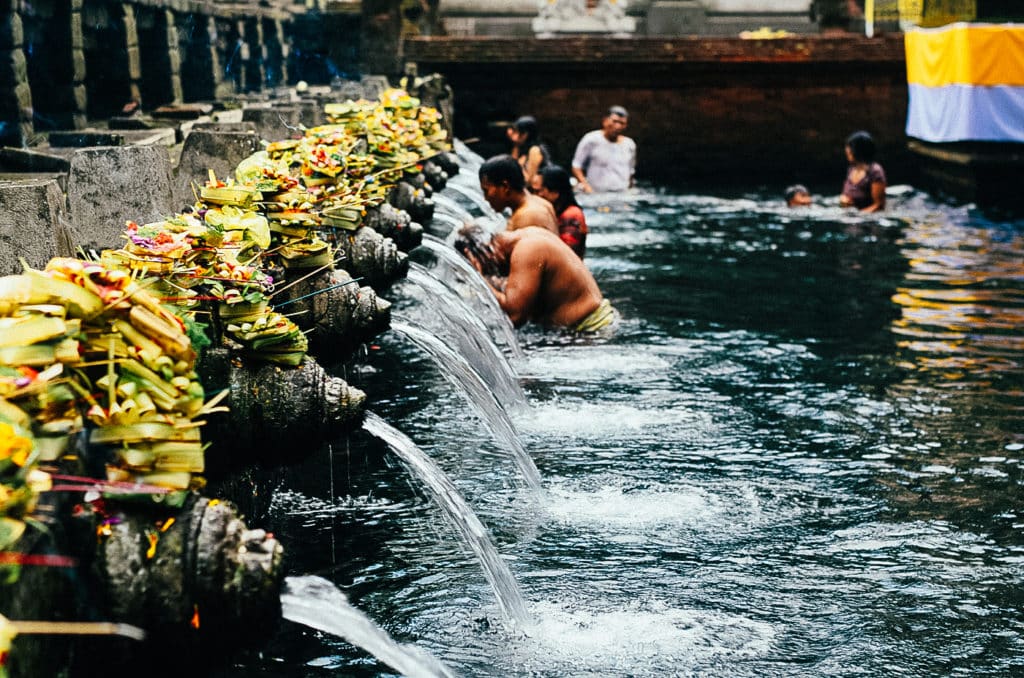
Uluwatu: a premier surfing spot on Bali’s southern coast
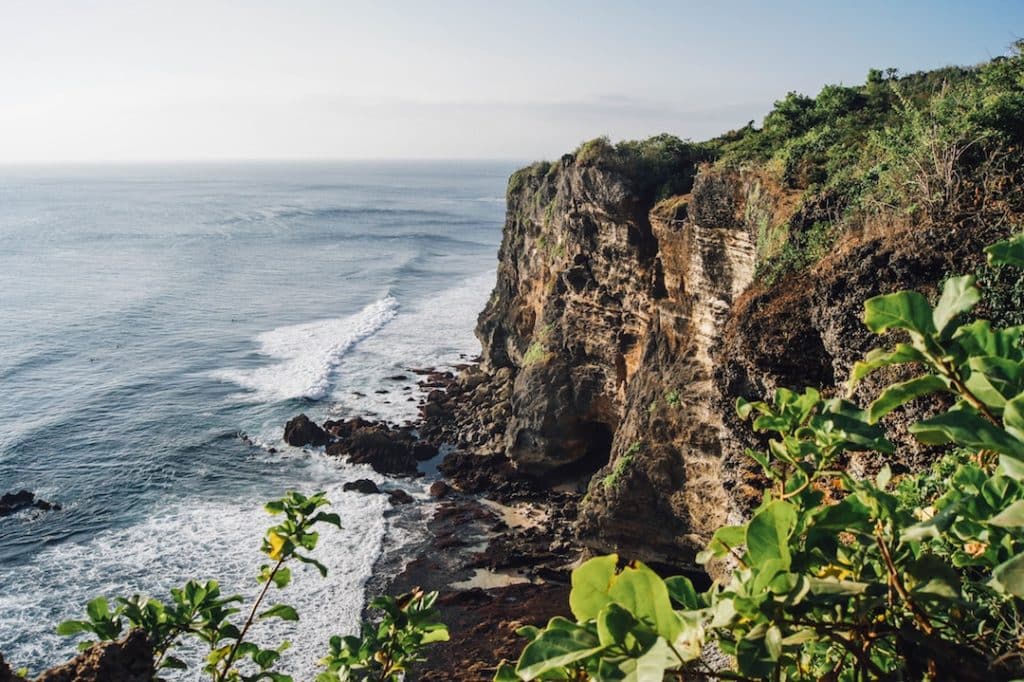
Uluwatu is known for its dramatic cliffside views, world-class surf breaks, and the iconic Uluwatu Temple. It’s a haven for surfers and those seeking breathtaking sunsets. Uluwatu is more secluded and offers a tranquil escape from the crowds.
Uluwatu is famous for its cliff-top temple, its traditional Balinese Hindu culture, and mischievous monkeys. Leave it to Ross Halfin to wax poetic about Uluwatu. From a New York Times interview with t
Here’s what you can’t miss in Uluwatu:
- Uluwatu Temple: Perched on a dramatic cliff, this ancient temple offers breathtaking sunset views and captivating Kecak dance performances.
- Surfing: Uluwatu is a mecca for surfers, with spots like Padang Padang, and Bingin Beach providing epic waves for all levels of surfers.
- Beach Clubs: Enjoy a day of luxury at beach clubs like Single Fin, Omnia, or Karma Beach Bali, where you can relax, swim, and savor delicious cocktails.
- Balangan Beach: This hidden gem offers a quieter beach experience and is perfect for sunbathing, swimming, and watching the sunset. It is one of the best white sand beaches in Bali.
- Bali’s Best Seafood: Uluwatu is renowned for its seafood. Don’t miss the chance to feast on freshly caught fish and other seafood delicacies at local warungs (small restaurants).
Tips for Finding Offbeat Places in Bali
While Bali’s popular tourist destinations are stunning, exploring offbeat places can provide a more authentic and peaceful experience. Here are some tips for discovering these hidden gems:
- Talk to the Locals: Strike up conversations with locals, such as your hotel staff, drivers, or shopkeepers. They often have insider tips on lesser-known attractions and hidden spots.
- Explore Remote Villages: Venture into Bali’s interior and explore the smaller villages, where you can witness traditional Balinese life and customs.
- Hike and Trek: Bali offers incredible hiking and trekking opportunities. Head to places like Munduk, Sidemen, or the West Bali National Park for off-the-beaten-path adventures.
- Visit Waterfalls: Bali is home to numerous waterfalls, some of which are less frequented by tourists. Seek out waterfalls like Sekumpul, Leke Leke, or Nungnung for a tranquil escape.
- Rent a Scooter: Renting a scooter gives you the freedom to explore hidden corners of the island. Just be sure to follow local traffic rules and wear a helmet.
- Attend Local Festivals: Check the local calendar for festivals and ceremonies. Attending these events provides a unique cultural experience and a chance to interact with locals.
- Use Social Media: Platforms like Instagram and travel blogs often feature hidden Bali gems. Research hashtags and blogs to discover new places.
- Book a Local Guide: Hiring a local guide can be a valuable investment. They can take you to offbeat places, share stories, and provide cultural insights.
By venturing off the beaten path in Bali, you’ll not only escape the crowds but also discover the island’s true essence and hidden treasures. Enjoy your journey of exploration!
Ready to explore Bali’s hidden gems and surf its stunning waves? Join us at Rapture Camps for an unforgettable adventure!
Discover the best of Bali with our surf and stay packages. Whether you’re a seasoned surfer or a novice looking to catch your first wave, we have the perfect experience for you.
Book your Bali surf getaway with Rapture Camps now and embark on a journey of exploration, culture, and waves like no other!
Get ready to ride the waves, immerse yourself in Balinese culture, and create lasting memories with Rapture Camps. We can’t wait to welcome you to paradise!
Hear What Rapture Surfcamps’ Guests Are Saying:
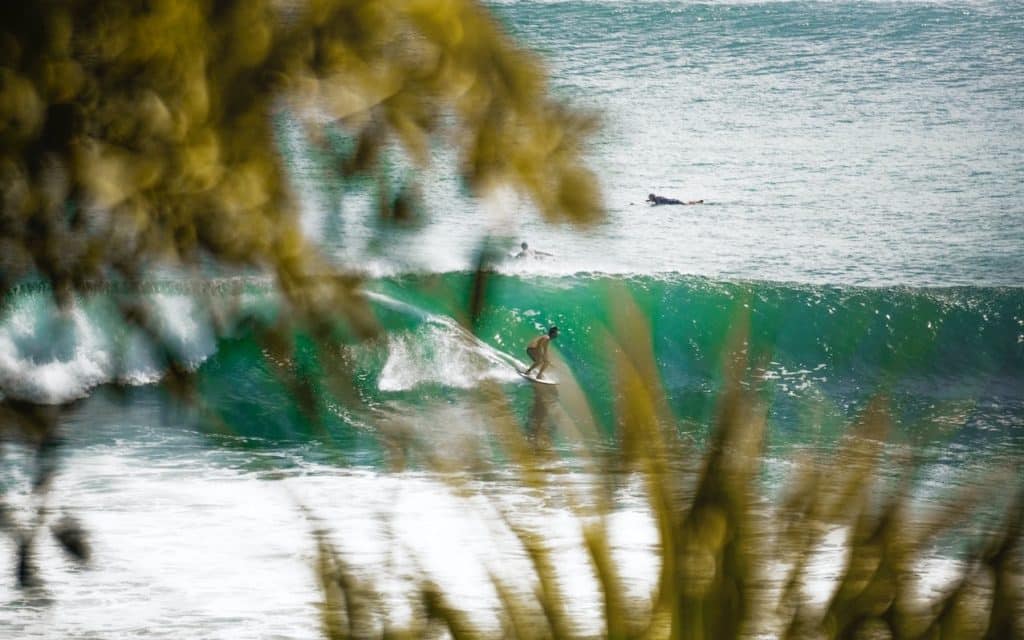
That’s not all, the surfing on the Bukit is beyond compare! ULUWATU
Uluwatu is a top surf spot with 6 sections and big swells
Uluwatu is normally considered a place suitable for highly experienced surfers, but beginners need not fear if they are accompanied by certified instructors. Read more about Bali’s best surf breaks here.
SURF IN ULUWATUExplore the Penglipuran Village, known for its well-preserved Balinese traditions and unique architecture. Tenganan Village, famous for its ancient “double ikat” weaving technique, is another hidden cultural gem offering a glimpse into Bali’s heritage.
Venture to the northern part of Bali to discover Gitgit Waterfall or Sekumpul Waterfall, where the lush surroundings and fewer tourists provide a serene and offbeat waterfall experience.
Visit the Ghost Palace Hotel in Bedugul, an eerie and abandoned hotel project with unfinished structures. It offers a unique setting for urban exploration and photography.
Head to the remote Pura Luhur Batukaru Temple, surrounded by lush forests and offering a tranquil spiritual experience. The Goa Lawah Temple, known as the Bat Cave Temple, is also a hidden gem with its mysterious cave and shrines.
Take a trip to the Jatiluwih Rice Terraces, a UNESCO World Heritage Site, where you can explore the expansive rice fields and witness traditional farming practices in a peaceful, less crowded setting.
The Bio-Rock Pemuteran project has created an underwater temple garden, where sculptures have been placed underwater to promote coral growth. Snorkeling or diving in this area provides a one-of-a-kind experience.
Escape the crowds and visit Pasut Beach, known for its black sand and serene atmosphere. This offbeat beach is perfect for a quiet stroll and offers unique views, especially during low tide.
Explore the rural charm of Belimbing Village, where the ancient subak irrigation system is still actively used for rice cultivation. This off-the-beaten-path destination provides an authentic look at traditional Balinese agriculture.
Trunyan Village, located on the edge of Lake Batur, is known for its unique burial customs. Unlike traditional cremation or burial, the deceased are left in the open, surrounded by a fragrant tree known as the Taru Menyan, creating an unusual yet culturally rich experience.
Head to the village of Abiansemal, where the Subak Museum hosts occasional traditional dance performances. This intimate setting provides a more authentic experience compared to the busier tourist areas.
